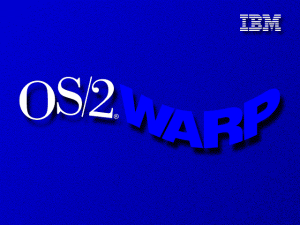 As the Internet has grown, three main protocols have reigned supreme in sending data online: IP (Internet Protocol), UDP (User Datagram Protocol), and TCP (Transmission Control Protocol). Understanding these protocols is key to both designing computer networks and keeping data secure. Foremost among these three protocols is IP, as both UDP and TCP use IP as a base layer for sending their information.
As the Internet has grown, three main protocols have reigned supreme in sending data online: IP (Internet Protocol), UDP (User Datagram Protocol), and TCP (Transmission Control Protocol). Understanding these protocols is key to both designing computer networks and keeping data secure. Foremost among these three protocols is IP, as both UDP and TCP use IP as a base layer for sending their information.
Continue reading
Tag Archives: Software Sagacity
Encrypting Passwords for the Web
 ASP.NET, PHP, and most web platforms offer a variety of techniques for data encryption, ranging from simple hashing to fully reversible encryption algorithms. Developers will need to choose the algorithm that offers the most security possible, while sacrificing the least amount of capability.
ASP.NET, PHP, and most web platforms offer a variety of techniques for data encryption, ranging from simple hashing to fully reversible encryption algorithms. Developers will need to choose the algorithm that offers the most security possible, while sacrificing the least amount of capability.
Continue reading
Share This Article
How to Bypass Firewalls Using SSH
 SSH is an age-old technology used by network administrators to remotely log into servers. With a few clever tricks, it can also be used to bypass most firewalls, and open up ports on the local network. All that is required on the target machine is an SSH client.
SSH is an age-old technology used by network administrators to remotely log into servers. With a few clever tricks, it can also be used to bypass most firewalls, and open up ports on the local network. All that is required on the target machine is an SSH client.
Continue reading
Share This Article
Digital Privacy: Your Emails Are Naked Online
 Despite many of the recent high-profile security breaches – from Target’s credit cards, to Edwards Snowden’s extravaganza, to further leaks of the NSA’s spying capabilities, major changes still have not taken place in most individuals’ digital habits.
Despite many of the recent high-profile security breaches – from Target’s credit cards, to Edwards Snowden’s extravaganza, to further leaks of the NSA’s spying capabilities, major changes still have not taken place in most individuals’ digital habits.
While the average person implicitly understands the difference between sending a postcard and an envelope, most eyes gloss over at the thought of encrypting their email or web traffic. Just like a letter without an envelope can be read by everyone in between, an email or web page that is not encrypted can, and will, be read by everyone who gets their hands on it. In addition, each person who handles that email doesn’t just read it, but copies it several times into various archives. The email archives and logs are often stored for years or decades.
Continue reading
Share This Article
Pop-Science, IBM’s OS/2, and the Slow Death of Software Innovation
 I remember it as yesterday – the excitement when IBM’s OS/2 Warp 4 first arrived. Released in 1996 – it was several generations ahead of Windows. It included Speech Recognition, Java support, and was more stable, fun, and friendly than Windows 95. A few years later and the entire operating system was basically dead, Microsoft Windows had defeated OS/2 and IBM gave up on the personal computer business. Why did the technically superior operating system lose?
I remember it as yesterday – the excitement when IBM’s OS/2 Warp 4 first arrived. Released in 1996 – it was several generations ahead of Windows. It included Speech Recognition, Java support, and was more stable, fun, and friendly than Windows 95. A few years later and the entire operating system was basically dead, Microsoft Windows had defeated OS/2 and IBM gave up on the personal computer business. Why did the technically superior operating system lose?
Continue reading
Share This Article
WordPress Development Tricks – Independent Blogs per Category
 With its extreme flexibility and proven prowess as a publishing platform, WordPress has become an invaluable tool in the arsenal of most web developers. However, advanced customization is often cumbersome and can be difficult to achieve.
With its extreme flexibility and proven prowess as a publishing platform, WordPress has become an invaluable tool in the arsenal of most web developers. However, advanced customization is often cumbersome and can be difficult to achieve.
Having spent several hours the past two days fighting against WordPress’ limited support for splitting blogs by category, I’m sharing a few of the insights gained during the arduous process.
Continue reading







